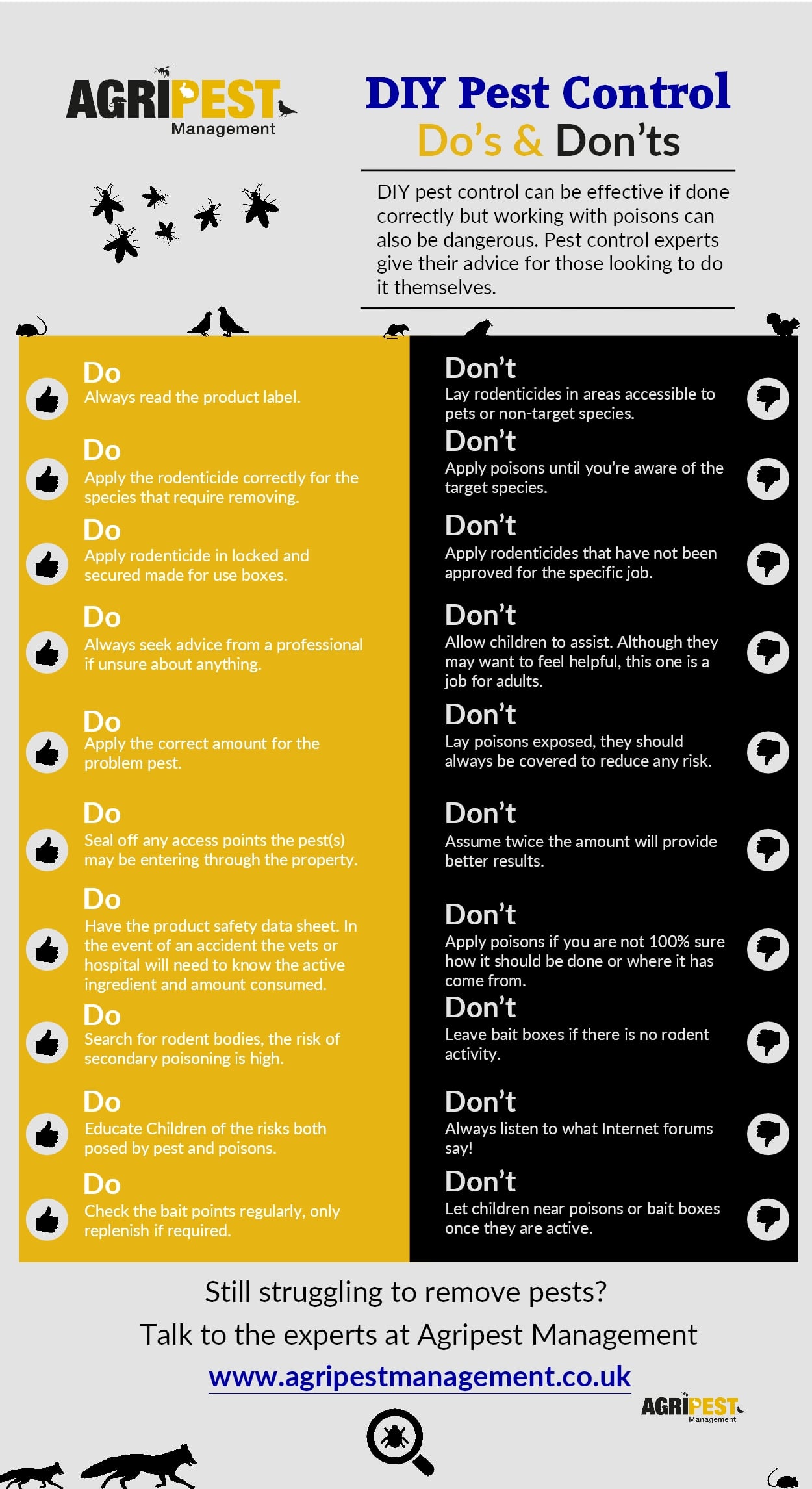The Function Of Parasite Exterminators In Environmental Sustainability
The Function Of Parasite Exterminators In Environmental Sustainability
Blog Article
Content Created By-Yates Mcmahon
You could think that parasite exterminators are only worried about removing pests, but their role goes beyond that. They play a crucial component in ecological sustainability.
By utilizing integrated pest management strategies, they not just remove pests however likewise safeguard biodiversity.
Additionally, they use sustainable insect elimination techniques to minimize ecological risks.
So, next time you wonder about the importance of bug exterminators, remember their payment to a greener and healthier world.
The Importance of Integrated Bug Administration
You ought to recognize the relevance of integrated parasite administration in keeping a lasting setting.
Integrated Pest Monitoring (IPM) is a strategy that concentrates on avoiding and controlling insects while decreasing making use of harmful chemicals. By applying IPM methods, you can successfully manage bug populations without creating injury to the environment.
One crucial element of IPM is making use of organic controls, such as killers and parasites, to normally manage pest populations. This lowers the need for chemical pesticides, which can have destructive impacts on wildlife and ecosystems.
Furthermore, IPM promotes using social and physical controls, such as crop rotation and exclusion techniques, to avoid insects from ending up being an issue in the first place.
Safeguarding Biodiversity Via Parasite Control
We can guard biodiversity through effective pest control techniques that focus on the conservation of natural environments. By using liable parasite control practices, we can protect and maintain the delicate equilibrium of varieties within our setting. Below are 3 ways in which insect control contributes to securing biodiversity:
- ** Preserving native plants and fauna ** - By targeting invasive species that endanger native plants and pets, pest control helps ensure the survival of native types and keeps the natural diversity of environments.
- ** Protecting against the spread of diseases ** - Managing insects such as mosquitoes and ticks minimizes the danger of diseases infecting wild animals populations, securing biodiversity and protecting against possible outbreaks.
- ** Saving jeopardized types ** - By handling pests that take advantage of or compete with threatened species, insect control initiatives can enhance the chances of survival and promote the healing of vulnerable populations.
Through accountable bug control techniques, we can proactively add to the conservation of biodiversity and the sustainability of our natural world.
Mitigating Environmental Threats With Lasting Pest Extermination Methods
By using sustainable bug elimination approaches, you can successfully alleviate ecological risks while making sure the security and health of both people and the natural community. Conventional bug control techniques commonly involve using harmful chemicals that can have damaging results on the environment.
However, lasting insect extermination approaches concentrate on reducing these threats by using environmentally friendly alternatives. As an example, integrated insect monitoring (IPM) methods focus on using safe and eco-friendly products, as well as all-natural predators to manage pest populaces. This method not just reduces the unfavorable influence on the setting yet additionally aids to preserve the fragile balance of the ecological community.
In addition, sustainable pest extermination techniques promote the conservation of biodiversity by targeting specific insects without damaging beneficial microorganisms. By taking on these methods, you can add to an extra sustainable and environmentally friendly approach to pest control.
Final thought
You are the pest exterminator, the guardian of nature's consistency. With incorporated mice extermination , you balance the delicate ecosystem, making sure the survival of varied varieties.
With sustainable methods, you alleviate ecological risks, keeping the fragile equilibrium undamaged.
Like a symphony conductor, you orchestrate the rhythm and flow, shielding the biodiversity that dances in best harmony.
With every action you take, you create a globe where nature flourishes, where insects retreat, and where sustainability reigns supreme.
